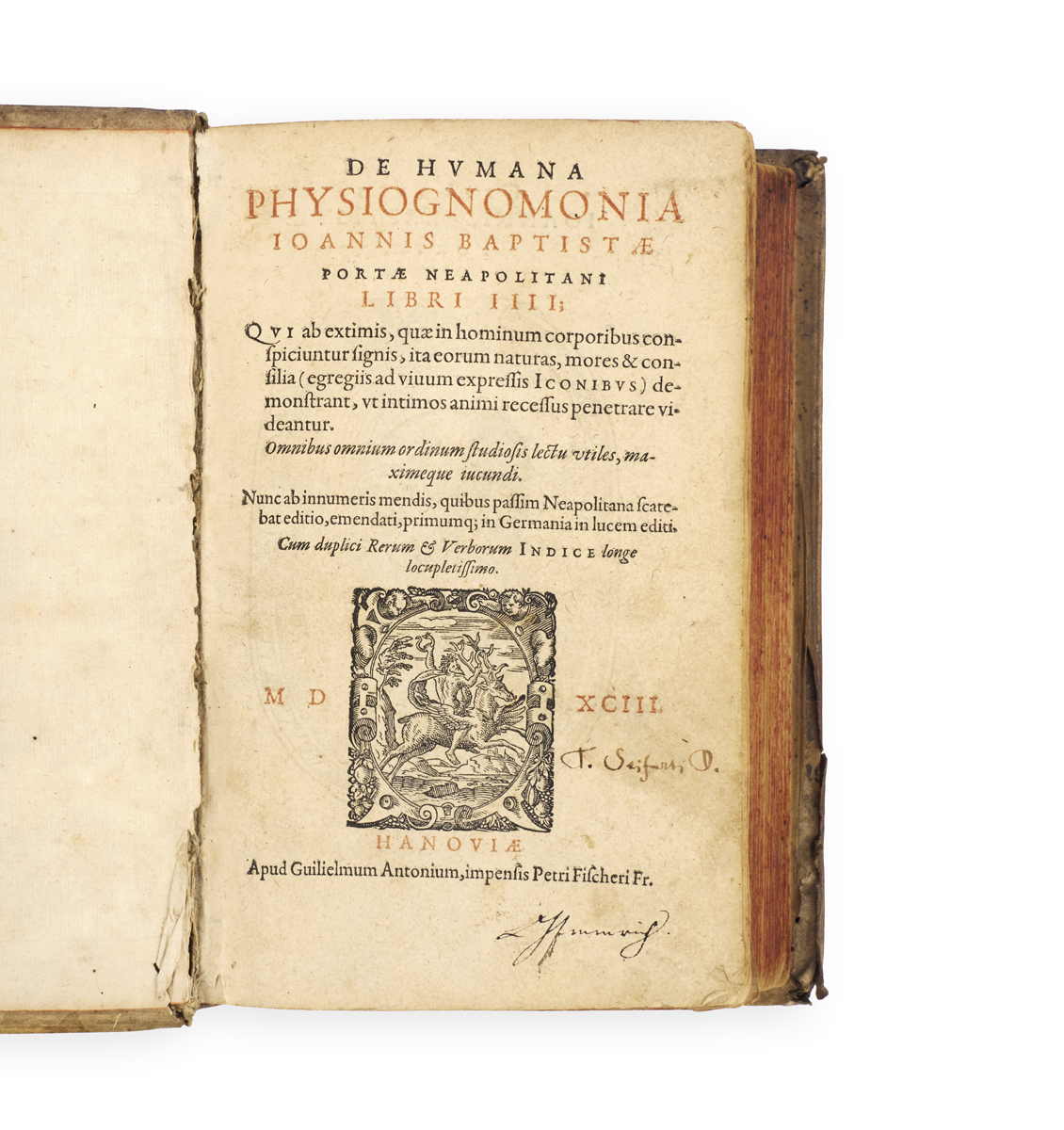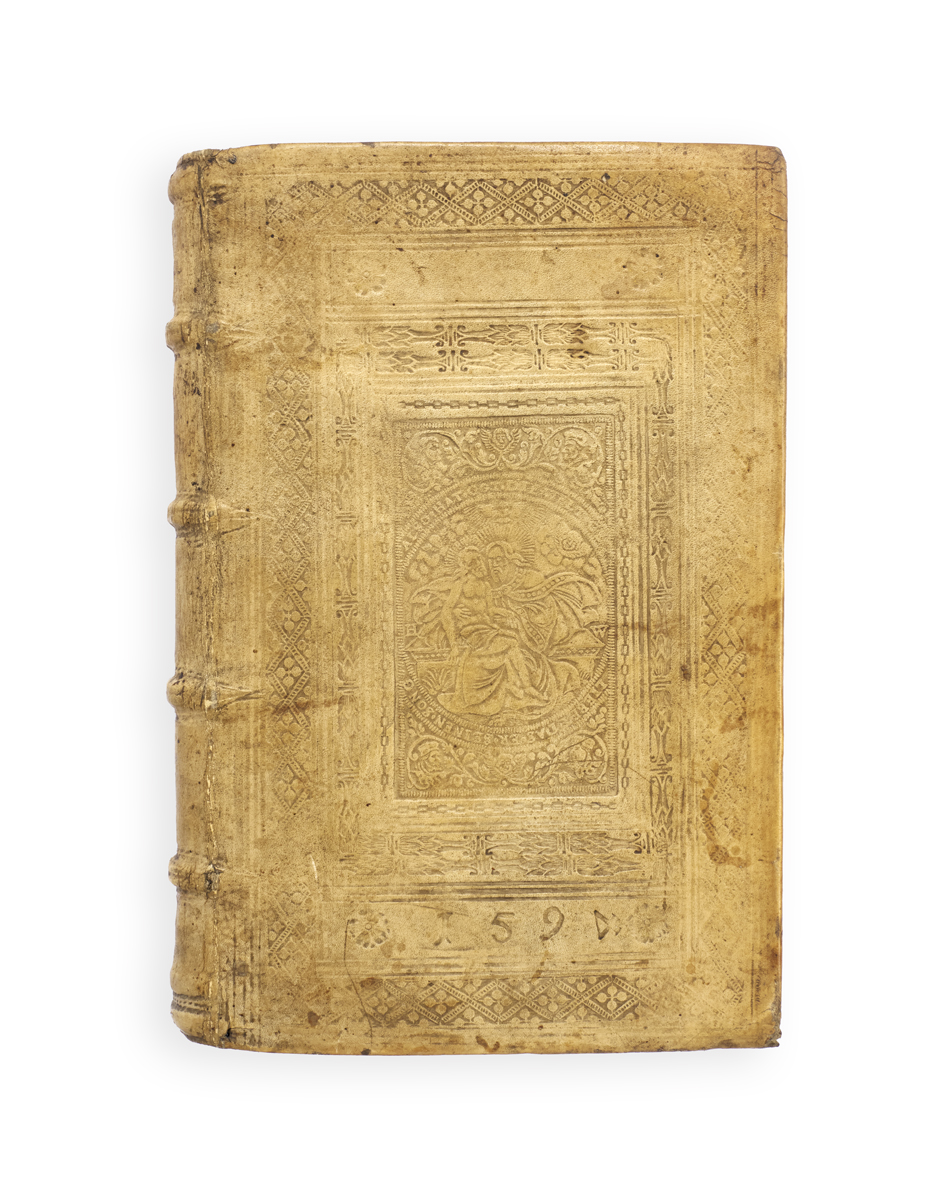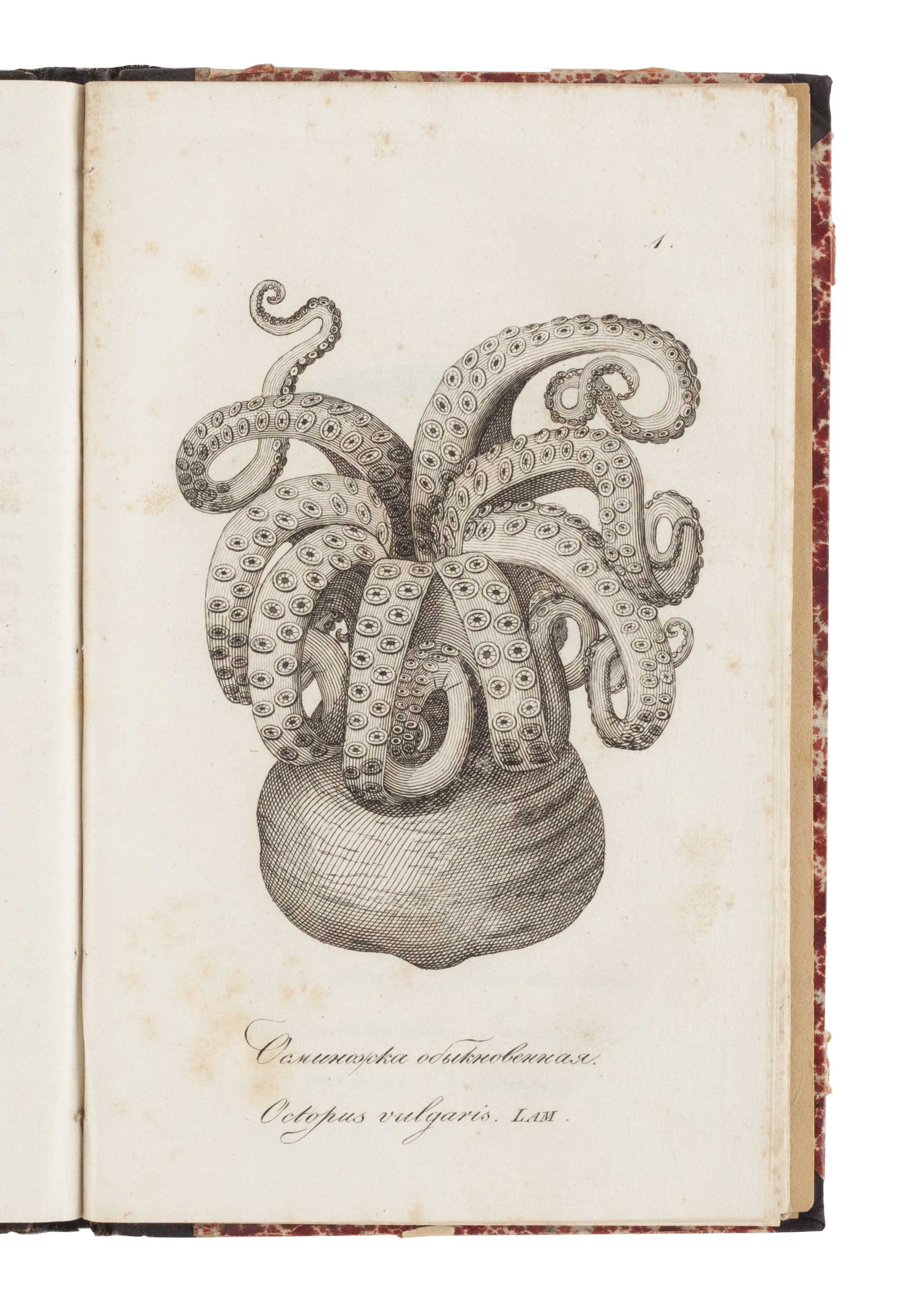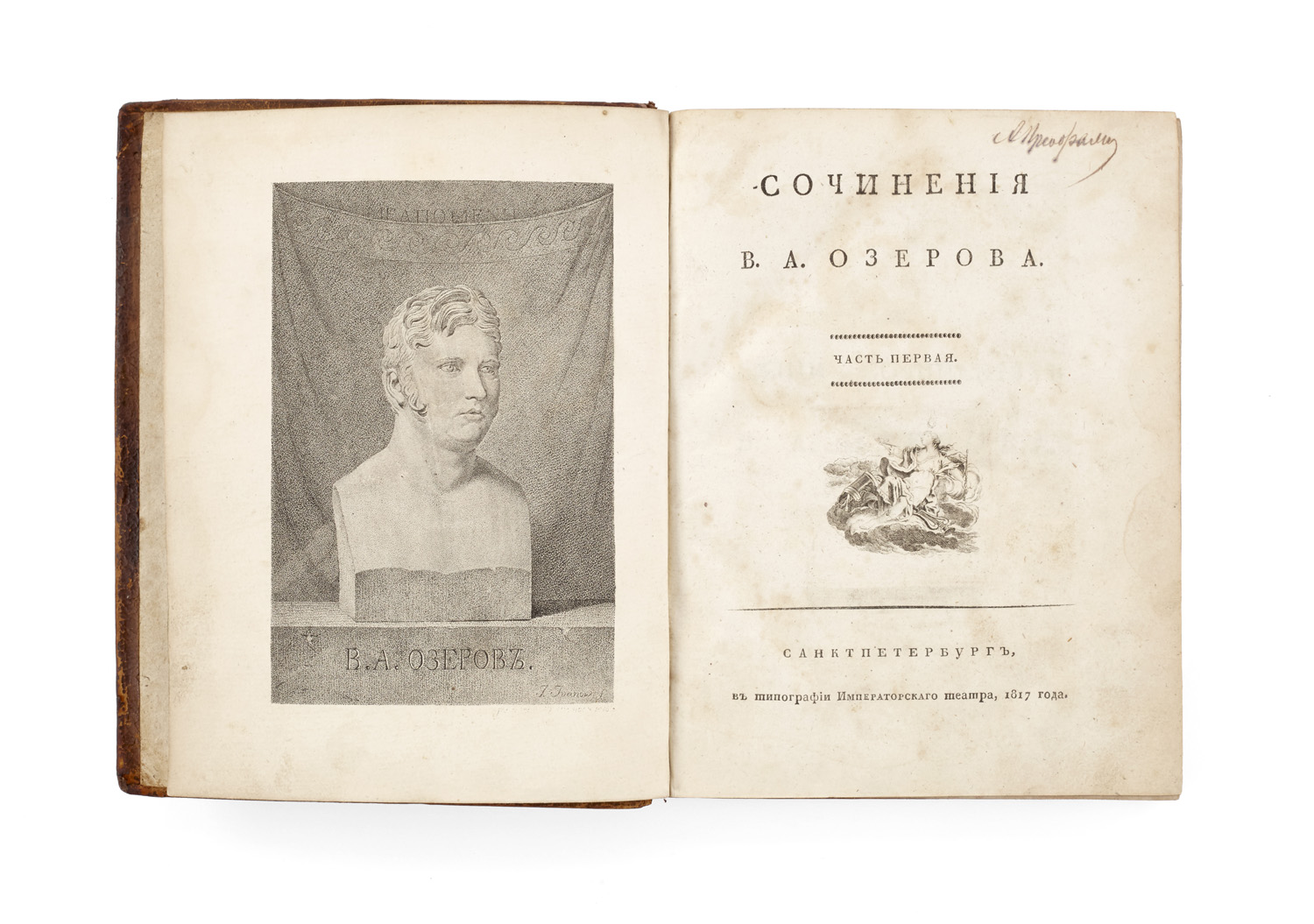



BOUND IN WHITE CALF
PORTA, Giambattista della.
De humana physiognomonia … libri IIII; qui ab extimis, quae in hominum corporibus conspiciuntur signis, ita eorum naturas, mores et consilia (egregiis ad vivum expressis iconibus) demonstrant, ut intimos animi recessus penetrare videantur … primumque in Germania in lucem editi …
Hanau, Wilhelm Antonius for [Frankfurt,] Peter Fischer, 1593.
8vo, pp. [xvi], 534, [57 (index)], [1 (blank)]; title in red and black with woodcut device, woodcut initials, head- and tailpieces, woodcut portraits to title verso and p. [xvi], numerous woodcuts to text (many repeats); small marginal paperflaw to lower outer corner of p. 241, some light foxing and toning; overall a very good copy in contemporary blind- and gilt-tooled white calf, central stamp to covers depicting the Trinity (see below), the date 1594 in gilt (faded) to upper cover, four raised bands to spine, purple edges (faded to red); some marks, worm track to lower cover, some worming to endpapers, front free endpaper coming loose; seventeenth-century ink ownership inscription of T. Seifert (‘T. Seiferti D.’) to title and his note to title verso (see below), nineteenth-century ownership inscription to title, some underlining in ink to text.

Added to your basket:
De humana physiognomonia … libri IIII; qui ab extimis, quae in hominum corporibus conspiciuntur signis, ita eorum naturas, mores et consilia (egregiis ad vivum expressis iconibus) demonstrant, ut intimos animi recessus penetrare videantur … primumque in Germania in lucem editi …
The second Latin edition and the first to be published in Germany of this richly illustrated work on physiognomy by the Italian polymath Giambattista della Porta (1535–1615), a beautiful copy in strictly contemporary German white calf.
The numerous woodcuts in this edition – including portraits of Porta and the dedicatee Cardinal Luigi d’Este, and numerous depictions of human and animal heads juxtaposed – are based on the fine copper engravings of the first edition, published at Vico Equense (Naples) by Giuseppe Cacchi in 1586.
‘Porta’s physiognomonics provides cartographies of the outward appearance of physical bodies aimed at predicting the soul’s hidden inclinations or dispositions (past, present or future) … Incorporating a huge array of classical and contemporary sources, Porta’s physiognomic texts are an outright summa of this branch of knowledge and practice … Porta’s physiognomonic assessments are based on resemblances in external appearance: for instance, men with a dark, Saturnine complexion evocative of dangerous animals are rendered very likely to go to prison … This example highlights the aesthetics structuring Porta’s physiognomonics: beautiful bodies are also morally good. There is a direct association between beauty, virtue, success and health, as these traits all originate from a good temperament, that is, from a harmonious mixture of the elements. A monstrous body, on the other hand, indicates ill health, bad luck, and dubious moral inclinations’ (Stanford Encyclopedia of Philosophy).
Provenance:
The T. Seifert who inscribes the title adds a note to the portrait of Porta on the verso, inviting the reader to compare the author’s face with those of dogs on pages 182 and 214, drawing attention to his long face and (supposedly) prominent swollen gums.
Binding:
The attractive binding is one of only a very small group of Renaissance bindings in white calf. It features a central panel-stamp of the Gnadenstuhl or Throne of Mercy, a trinitarian image of a mournful God the Father displaying his sacrificed Son, accompanied by the dove of the Holy Spirit. It is here signed ‘H W’ and surrounded by the text ‘Also hat Got die Welt geliebet das er seinen Son g’ (see Haebler, p. 487, H.W. Platten III).
References:
USTC 629965; VD16 P-4326; Adams P-1925; Garrison & Morton 150.

